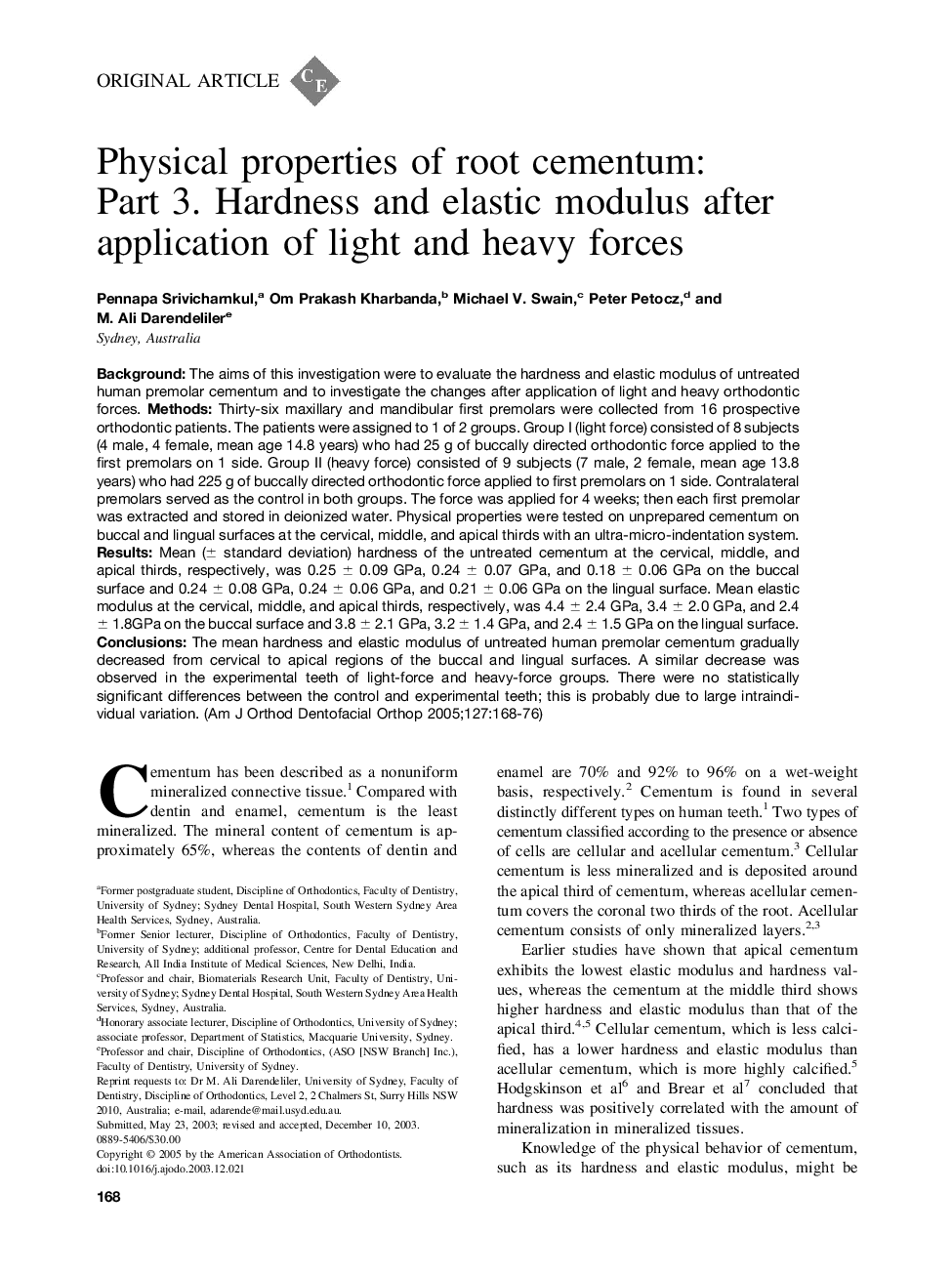| Article ID | Journal | Published Year | Pages | File Type |
|---|---|---|---|---|
| 9993090 | American Journal of Orthodontics and Dentofacial Orthopedics | 2005 | 9 Pages |
Abstract
Background: The aims of this investigation were to evaluate the hardness and elastic modulus of untreated human premolar cementum and to investigate the changes after application of light and heavy orthodontic forces. Methods: Thirty-six maxillary and mandibular first premolars were collected from 16 prospective orthodontic patients. The patients were assigned to 1 of 2 groups. Group I (light force) consisted of 8 subjects (4 male, 4 female, mean age 14.8 years) who had 25 g of buccally directed orthodontic force applied to the first premolars on 1 side. Group II (heavy force) consisted of 9 subjects (7 male, 2 female, mean age 13.8 years) who had 225 g of buccally directed orthodontic force applied to first premolars on 1 side. Contralateral premolars served as the control in both groups. The force was applied for 4 weeks; then each first premolar was extracted and stored in deionized water. Physical properties were tested on unprepared cementum on buccal and lingual surfaces at the cervical, middle, and apical thirds with an ultra-micro-indentation system. Results: Mean (± standard deviation) hardness of the untreated cementum at the cervical, middle, and apical thirds, respectively, was 0.25 ± 0.09 GPa, 0.24 ± 0.07 GPa, and 0.18 ± 0.06 GPa on the buccal surface and 0.24 ± 0.08 GPa, 0.24 ± 0.06 GPa, and 0.21 ± 0.06 GPa on the lingual surface. Mean elastic modulus at the cervical, middle, and apical thirds, respectively, was 4.4 ± 2.4 GPa, 3.4 ± 2.0 GPa, and 2.4 ± 1.8GPa on the buccal surface and 3.8 ± 2.1 GPa, 3.2 ± 1.4 GPa, and 2.4 ± 1.5 GPa on the lingual surface. Conclusions: The mean hardness and elastic modulus of untreated human premolar cementum gradually decreased from cervical to apical regions of the buccal and lingual surfaces. A similar decrease was observed in the experimental teeth of light-force and heavy-force groups. There were no statistically significant differences between the control and experimental teeth; this is probably due to large intraindividual variation.
Related Topics
Health Sciences
Medicine and Dentistry
Dentistry, Oral Surgery and Medicine
Authors
Pennapa Srivicharnkul, Om Prakash Kharbanda, Michael V. Swain, Peter Petocz, M. Ali Darendeliler,
